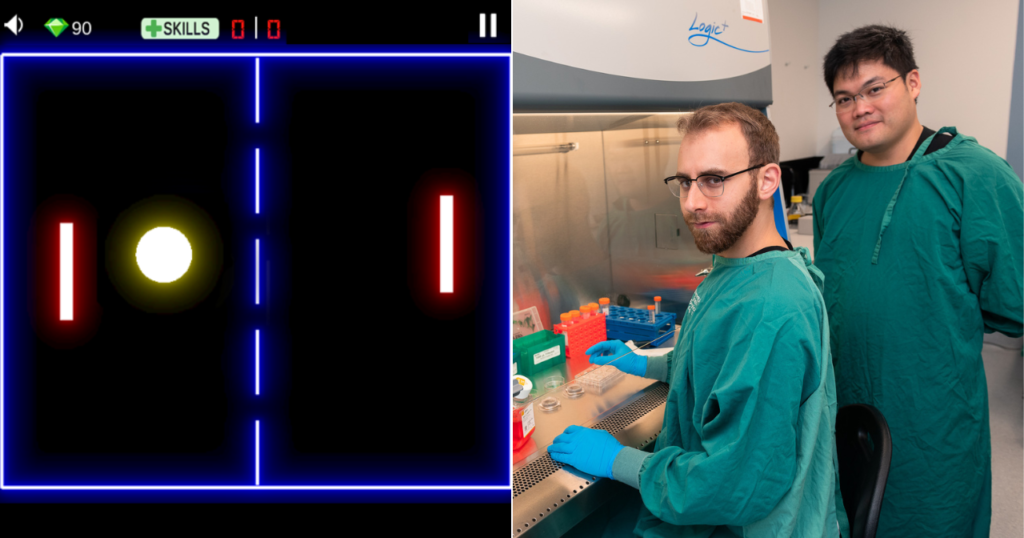We all tend to joke about running on our “last two brain cells” when doing an arduous task. It’s something innately funny in the sense that it sounds smart, yet also unexplainable for us laymen. But what if you could actually quantify the amount of brain cells it would take to carry out a specific task? A team in Melbourne, Australia has figured out just that, revealing that it takes about 800,000 lab-cultivated brain cells to perform goal-directed tasks.
In this particular case, that task is playing the retro computer game: Pong . The results of the peer-reviewed study, published on October 12, 2022 in the journal Neuron , open up a new frontier in understanding the effects of medicine and alcohol on the brain. The brain cells in a dish (quite literally) – or DishBrain – don’t actually respond to visual cues.
Instead, they rely on electrical signals from the electrodes that coat their dish. DishBrain has exhibited the ability to learn , changing and adjusting brain cell activity consistent with them actually behaving as a dynamic system. The neurons in DishBrain are able to do this as a result of experience increases over time.
“We have shown we can interact with living biological neurons in such a way that compels them to modify their activity, leading to something that resembles intelligence,” says Brett Kagan , lead author of the study and Chief Scientific Officer of biotech start-up Cortical Labs. While this isn’t the first time scientists have been able to read neuron activity in such an arrangement, it is the first time they’ve been able to study the cells in a structured and meaningful way. “In the past, models of the brain have been developed according to how computer scientists think the brain might work,” Kagan reveals.
“That is usually based on our current understanding of information technology, such as silicon computing. But in truth we don’t really understand how the brain works. ” DishBrain essentially acts as a living (almost sentient) model of the brain, allowing scientists to identify and observe actual neurological functions instead of relying on computer-generated models.
But what other real-world applications does DishBrain have, aside from performing menial tasks? According to Cortical Labs CEO, Hon Weng Chong, it also offers a much simpler approach to testing how the brain works, allowing scientists to gain valuable insights into conditions like epilepsy and dementia . As to whether we’ll be able to rely on lab-grown brain cells to perform more complicated tasks anytime soon, it’s still early days. “This is brand new, virgin territory.
And we want more people to come on board and collaborate with this, to use the system that we’ve built to further explore this new area of science,” says Chong. “As one of our collaborators said, it’s not every day that you wake up and you can create a new field of science. ” Click here to check out the full study.
This car absorbs CO2 from the air & can travel nearly 320km before needing to ‘refuel’ Parents will have low-cost ‘Tamagotchi children’ in 50 years, AI expert predicts This new coin-sized battery charges in just 3 minutes and seems to last forever Someone used AI to create these eery, life-like photos of Pikachu in 1920s Japan.
From: mashable
URL: https://sea.mashable.com/tech/21580/scientists-grow-brain-in-lab-and-teach-it-how-to-play-pong-in-just-5-minutes
